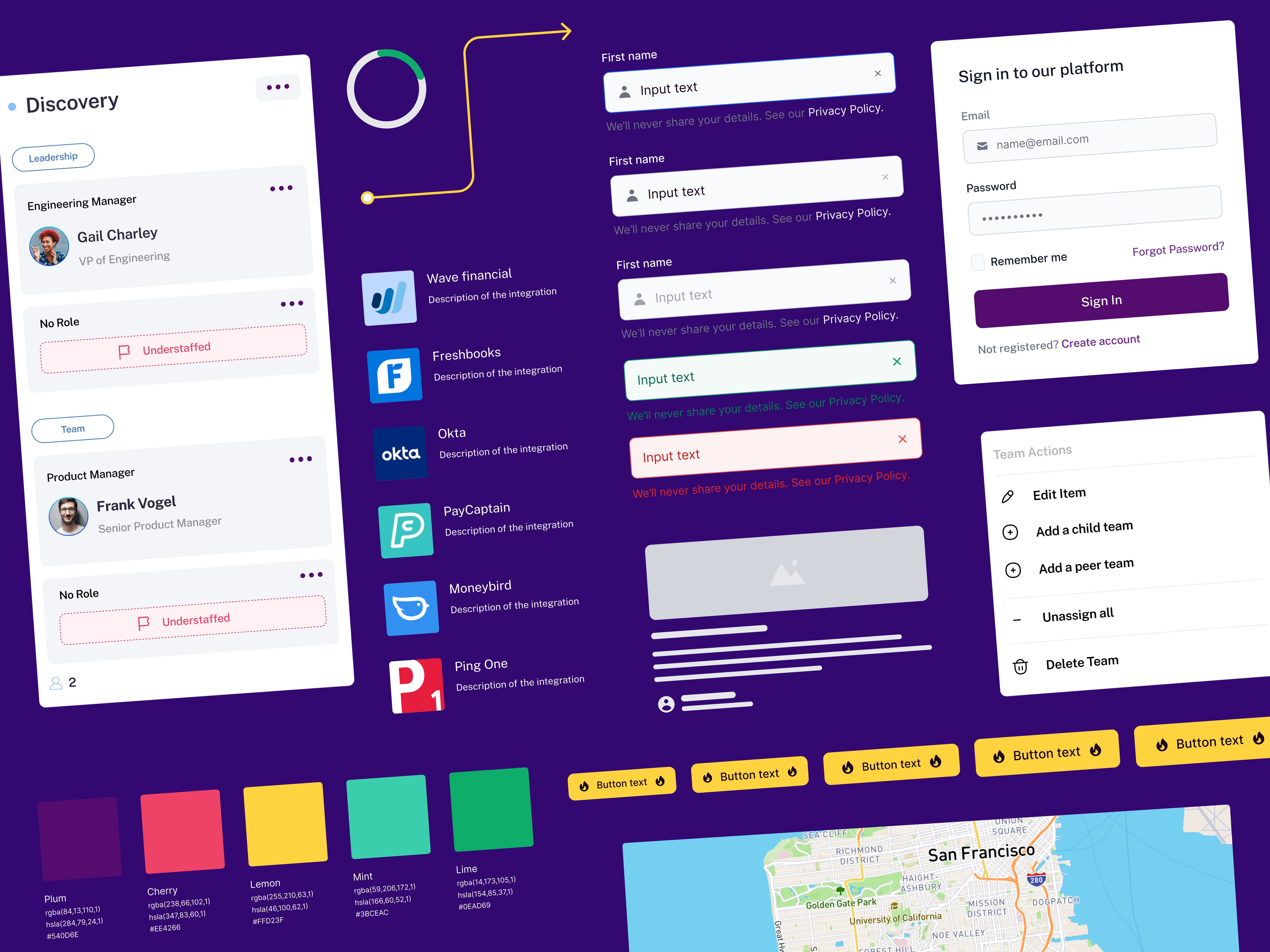Orgspace Redesign + Design System
At Orgspace, I led the creation of a custom design system built on the Tailwind UI framework, designed to streamline product development and ensure a cohesive, scalable interface across the platform.

My Role
Lead Product Designer — responsible for design system architecture, Figma setup, documentation, and implementation across product screens.
The Challenge
The Orgspace team needed a flexible design system that could support rapid iteration while maintaining visual consistency. Their existing design files lacked structure, and engineers needed clear documentation to build faster and more confidently.
The Solution
I built a design system from the ground up using Figma Variables, Properties, and Variants to drastically reduce the number of components required—making it simple yet powerful for the team to use.
Key highlights:
- Figma Variables: Established color, spacing, and typography tokens for both light and dark modes.
- Component Properties & Variants: Streamlined button, input, and navigation components, cutting redundancy by over 50%.
- Tailwind UI Integration: Ensured all components aligned with Tailwind's utility-first approach for a seamless designer–developer handoff.
- Dark Mode Support: Created theme variables to instantly toggle between light and dark mode, improving accessibility and flexibility.
Collaboration & Documentation
I collaborated closely with the CEO and Head of Engineering to ensure the system was fully documented, consistent, and easy to adopt across teams. Each component was annotated with usage guidelines, naming conventions, and examples of responsive behavior.
I also conducted feature discovery sessions with leadership to define user flows and align on requirements before moving into design.
Outcome
After the system was complete, I used the components, variables, and styles to build out the product screens, ensuring full alignment between design and implementation.
The result was a scalable, documented design foundation that accelerated development time and unified the product's visual language.
Impact
- Reduced design-to-dev handoff friction.
- Improved design consistency and scalability.
- Enabled faster iteration cycles for new features.
- Empowered the team to maintain and expand the system confidently.